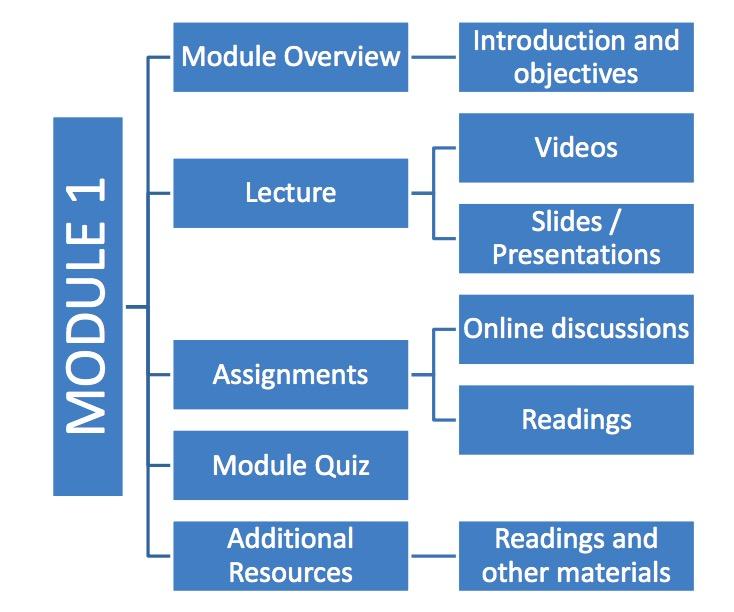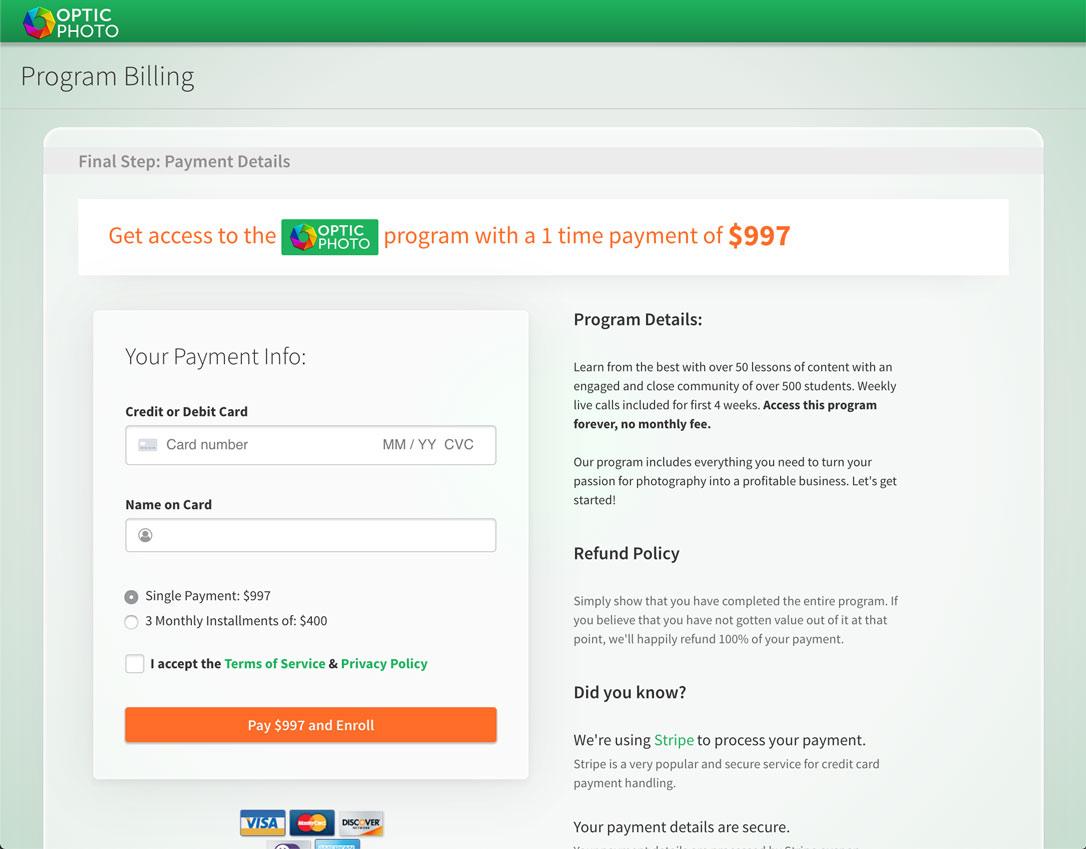Are you ready to share your expertise with the world but unsure where to start? Creating an online course is a fantastic way to connect with learners, showcase your knowledge, and even earn some extra income—without needing a hefty budget. And guess what? you can do all of this using WordPress, one of the most versatile and user-pleasant platforms out there. In this article, we’ll walk you through the step-by-step process of creating your very own online course, entirely free and without any limits. Whether you’re a seasoned professional or an excited hobbyist, you’ll find that setting up your course can be both simple and rewarding. So, let’s dive in and turn your passion into a thriving online learning experience!
How to Choose the Right WordPress Theme for Your Online Course
Choosing the right WordPress theme for your online course can be a game-changer in creating a seamless learning experience. With countless options available, it’s essential to focus on a few key features that will enhance the usability and aesthetics of your course site.
First, consider responsiveness. Your students will likely access your course from various devices, including smartphones, tablets, and desktops. A responsive theme ensures that your content looks great and functions well on all screen sizes. This adaptability can significantly improve user engagement and satisfaction.
Next, look for themes specifically designed for educational purposes. These themes often come with built-in features like course layouts, quiz modules, and student management systems. Using a dedicated theme can save you time and effort, as it likely includes functionalities that cater directly to the needs of both instructors and learners.
Also,pay attention to customization options. You want a theme that allows you to tailor the look and feel of your course to match your brand. Look for themes that offer:
- Color scheme customization
- Font selection
- Page layout adjustments
- Widget areas
Another crucial aspect is SEO optimization. A theme that is optimized for search engines can definitely help your course rank better in search results, attracting more students. Check for features like clean coding, fast loading times, and compatibility with popular SEO plugins.
To help you in your decision-making process, here’s a brief comparison of popular WordPress themes for online courses:
| Theme | Responsive | Course Features | Customizable |
|---|---|---|---|
| Astra | ✔️ | ✔️ | ✔️ |
| Divi | ✔️ | ✔️ | ✔️ |
| Eduma | ✔️ | ✔️ | ✔️ |
| Learndash | ✔️ | ✔️ | ✔️ |
Lastly, always check the support and documentation offered by the theme developers. A theme with robust support can make your life much easier, especially if you encounter any technical issues or need assistance with setup.
Essential Plugins to Enhance Your Course Creation Experience
Creating an online course can be an exhilarating journey, and with the right plugins, you can elevate your course creation experience to new heights. here are some essential plugins that will not only streamline the process but also enhance the learning experience for your students.
- LifterLMS: A must-have for anyone serious about online course creation. This plugin allows you to create engaging courses with quizzes, multimedia lessons, and even membership options.Plus, it’s user-friendly, making it perfect for beginners.
- LearnDash: If you’re looking for advanced features, LearnDash is the way to go. This plugin is packed with powerful tools for managing courses, user progress, and certificates. It’s especially useful for those who want to gamify their courses.
- MemberPress: To monetize your courses effectively,MemberPress is indispensable. It helps you create membership sites where you can restrict content and set up subscription plans, ensuring that only paying customers access premium material.
- WP Courseware: For those who prefer a drag-and-drop interface, WP courseware simplifies course creation. You can easily organise your modules and lessons, making it a breeze to set up complex courses.
- BuddyPress: Enhancing community engagement is vital for online courses. BuddyPress allows you to create social networks,enabling students to interact,share ideas,and collaborate,making the learning experience much richer.
To manage and analyze your course’s performance, consider integrating analytics plugins like MonsterInsights or Google Analytics Dashboard for WP. Tracking user engagement and course completion rates will help you refine your offerings over time.
Moreover, incorporating a SEO plugin, such as Yoast SEO, can ensure that your courses reach a wider audience. Optimizing your course content for search engines can significantly boost visibility, driving more traffic to your site.
| Plugin | Main feature |
|---|---|
| LifterLMS | Complete course builder |
| LearnDash | Advanced course management |
| MemberPress | Membership site creation |
| WP Courseware | Drag-and-drop course setup |
| BuddyPress | Community building tools |
With these plugins in your toolkit, you’ll be well-equipped to create a professional and engaging online course. Each plugin offers unique features that cater to different aspects of course creation, allowing you to tailor your approach and maximize your students’ learning experience.

Step-by-Step Guide to Setting Up Your Course structure
Creating a well-organized course structure is essential for delivering an engaging learning experience. Start by identifying the key components of your course. Focus on the topics you want to cover and consider the learning outcomes you wish to achieve.This will guide you in creating a framework that is both comprehensive and easy to follow.
Next, break down your course into manageable modules or units.Each module should focus on a specific topic or skill. Here’s how you might structure it:
- Module 1: Introduction to the Subject
- Module 2: Key Concepts and Theories
- Module 3: Practical Applications
- Module 4: Advanced Techniques
- Module 5: Review and Assessment
Once your modules are outlined, it’s time to dive deeper. For each module, create a detailed lesson plan. This should include:
- Objectives: What do you want your students to learn?
- Content: What materials will you provide (videos, articles, quizzes)?
- Activities: What exercises or projects will reinforce their learning?
- Assessment: How will you evaluate their progress?
To visualize your course structure, consider using a table. This helps in laying out the timeline and expected outcomes clearly:
| Module | Duration | Assessment Type |
|---|---|---|
| Module 1 | 1 week | Quiz |
| Module 2 | 2 Weeks | Discussion Post |
| Module 3 | 3 Weeks | Project |
| Module 4 | 1 Week | Final Exam |
| Module 5 | 1 Week | Feedback Survey |
ensure that your course structure is flexible. Be open to feedback from your students and willing to adapt your content based on their needs. This responsiveness will not only enhance their learning experience but also improve your course’s overall effectiveness.
Creating Engaging Content That Captivates Your Students
Creating content that not only informs but also engages your students can make all the difference in the effectiveness of your online course. It’s essential to present material in a way that resonates with your audience,sparking curiosity and encouraging interaction. Here are some strategies to captivate your learners:
- Utilize multimedia: Incorporate videos, audio clips, and images to break up text and keep your students interested. A well-placed video can enhance understanding and retention, making the learning experience more dynamic.
- Interactive Elements: Include quizzes, polls, and discussions. These tools encourage participation and help reinforce the material. WordPress plugins like Quiz and Survey Master or WP Polls can easily add these features.
- Storytelling: Weave stories into your lessons. Relating concepts to real-world scenarios or personal anecdotes can make facts more relatable and memorable. Consider using case studies that connect the content to real-life applications.
Another effective method to engage students is to encourage collaboration. Creating forums or comment sections where learners can share their thoughts and questions fosters a community atmosphere. this not only helps students feel connected but also allows them to learn from each other.
In addition, consider tailoring your content with personalization. Segment your audience and adapt your material to fit different learning styles or levels of expertise. For example, you could create separate modules for beginners and advanced learners, ensuring that everyone finds value in your course.
| Engagement Strategy | Description |
|---|---|
| Multimedia Usage | Enhances learning through visual and auditory stimulation. |
| Interactivity | Fosters active participation and feedback. |
| Storytelling | Makes content relatable and memorable. |
| Collaboration | Builds a sense of community among learners. |
| Personalization | Caters to diverse learning styles and levels. |
keep your content fresh and updated. Regularly revisiting and revising course materials, and responding to feedback can help ensure that your content remains relevant and engaging.Encouraging students to provide input on what they find most useful can guide your updates, making learners feel valued and heard.
implementing Interactive Elements to Boost Learning Engagement
Engaging learners in an online course can be a challenge, but incorporating interactive elements can transform a passive learning experience into an active one. By integrating various tools and techniques, you can keep your students motivated and eager to participate.
Consider using quizzes and polls to gauge understanding and gather feedback. These tools not only assess knowledge but also allow learners to reflect on what they’ve learned. Here’s a simple quiz format you can implement:
| Question | Options |
|---|---|
| What is the best way to learn? |
|
Furthermore, incorporating discussion forums encourages students to interact with one another. This not only builds a sense of community but also facilitates peer-to-peer learning. You can set up specific topics for discussion, enabling learners to share insights and ask questions. Encourage participation by featuring the most active contributors in your course updates or newsletters.
Don’t underestimate the power of multimedia content. Videos, infographics, and podcasts can appeal to different learning styles. A well-placed video can clarify complex concepts and maintain interest. You could create a section in each module featuring short video snippets that summarize key points. This breaks up text-heavy content and keeps the learners engaged.
another effective strategy is gamification. By incorporating elements like points, badges, and leaderboards, you can create a competitive spirit among learners. This not only drives engagement but also encourages them to complete modules and participate more actively.Consider setting up a system where students earn rewards for completing tasks or participating in discussions.
consider using real-time collaboration tools. Platforms like Google Docs or Trello can allow students to work together on projects, fostering teamwork and communication skills. This not only enhances learning but helps build connections among participants.You can assign group projects where students can collaborate and present their findings to the class.

Setting Up Payment Options for Your Online Course
When it comes to monetizing your online course,selecting the right payment options is crucial for both you and your students. Offering various payment methods not only enhances user experience but also increases the likelihood of conversions.Here are some steps to help you navigate this vital aspect of your course setup.
1. Choose Your Payment Processors
To begin, you need to decide wich payment processors you want to integrate into your WordPress site. Popular options include:
- PayPal: Highly recognized and trusted by users worldwide.
- Stripe: Offers a seamless checkout experience with credit and debit card payments.
- Square: Ideal for those who may also sell physical products.
- Authorizenet: Great for businesses that require more advanced payment options.
2. Set Up Your Payment Gateway
After selecting the payment processors, it’s time to set up your payment gateway. This is where the magic happens. each processor will provide you with instructions to connect their service to your website. Typically, you will:
- Sign up for an account with your chosen payment processor.
- Obtain API keys or credentials.
- Integrate the keys into your WordPress course plugin or theme.
3. Pricing Models and Options
Decide on how you want to price your courses. Offering flexible pricing models can attract a broader audience. Consider:
- One-time payments: A straightforward option where students pay once.
- Subscriptions: Ideal for courses with continuous content updates.
- Payment plans: Allowing students to pay in installments can increase accessibility.
4. Currency and Tax Settings
Make sure to configure the currency and tax settings according to your target audience. If you have a global audience, offering multiple currency options can enhance the user experience. Here’s a basic table for reference:
| Currency | Symbol | Processor |
|---|---|---|
| USD | $ | PayPal, Stripe |
| EUR | € | PayPal, Stripe |
| GBP | £ | PayPal, Stripe |
5. Test Your Payment options
Before launching your course, always test your payment options.Create a few test transactions to ensure everything works smoothly. This helps you identify any potential issues that might frustrate your students. Be sure to check:
- Prosperous transaction processing.
- payment confirmation emails.
- Refund and cancellation policies.
Setting up your payment options correctly can streamline the purchasing process and enhance the overall experience for your students, ultimately leading to greater success for your online course.

Marketing Your Course: Strategies to Reach Your Target Audience
Reaching your Target Audience
Once you’ve created your online course, the next challenge is getting it in front of the right people. Your target audience is out there, but you need to employ a variety of strategies to ensure they discover your course. Here are some effective methods to consider:
- Leverage Social Media: Platforms like Facebook, Instagram, and LinkedIn can be powerful tools for reaching potential students. Create engaging posts,utilize stories,and even consider hosting live Q&A sessions to create buzz around your course.
- Email Marketing: Build an email list by offering a freebie related to your course topic. Regular newsletters with valuable content can keep your audience engaged and informed about your course launch.
- Content Marketing: Start a blog or a YouTube channel that provides helpful content related to your course. This establishes you as an authority in your niche and draws traffic back to your course page.
- Partnerships and Collaborations: Team up with other content creators or influencers in your niche. A shoutout or joint webinar can tap into their audience and expand your reach.
Additionally, consider using paid advertising to accelerate your outreach. Facebook Ads and Google Ads can target specific demographics, interests, and behaviors, putting your course in front of the right eyes. Even a small budget can lead to significant returns if managed well.
Promotional Offers
Don’t underestimate the power of promotional offers. Limited-time discounts can create urgency and encourage potential students to enroll. You might also consider offering a free introductory lesson or a money-back guarantee to eliminate hesitation.
Community Engagement
Building a community around your course can significantly enhance its visibility. Engage with your audience on forums and social media groups. Join discussions, answer questions, and share insights related to your course material. This not only drives interest but also fosters trust and credibility.
| Strategy | Description |
|---|---|
| Social Media Marketing | Engaging posts and interactions on platforms to attract attention. |
| Email Campaigns | Regular newsletters and targeted campaigns to nurture leads. |
| Content Creation | Blogs and videos that offer value and draw traffic. |
| Paid Advertising | Use targeted ads to reach a broader audience quickly. |
| Promotions | Offer discounts or free lessons to incentivize sign-ups. |
By implementing these strategies, you’ll not only reach your target audience but also foster a community of engaged learners eager to enroll in your online course. Tailor these techniques to fit your unique content and audience,and watch as your course gains traction in the digital marketplace.

Building a Community Around Your Course for Ongoing Engagement
Creating an online course is just the beginning; the real magic happens when you build a vibrant community around it.Engaging your students not only enhances their learning experience but also fosters lasting connections that can lead to future collaborations, referrals, and course enhancements. Here’s how you can cultivate a thriving community.
Leverage Social Media Groups
One of the easiest ways to create community is by utilizing social media.Consider setting up a dedicated Facebook group or a LinkedIn community for your course participants. Here, they can share insights, ask questions, and support one another. This allows for spontaneous discussions and engagement even outside of your course content.
- Encourage students to share their progress.
- Post weekly challenges or discussions to spark conversation.
- Invite guest experts to join the group for live Q&A sessions.
host Regular Live Sessions
Regular live sessions can significantly increase engagement. Whether it’s a weekly Q&A, a monthly workshop, or a casual hangout, live interactions help build stronger relationships. Use platforms such as Zoom or Google Meet to facilitate these sessions. Make sure to promote them in advance to generate excitement.
Utilize Discussion Forums
Implement a discussion forum on your course site to allow students to interact in a more structured environment. this can be a space for them to post questions, share resources, and give feedback on each other’s work. Consider using plugins like BuddyPress or bbPress to create a forum right on your WordPress site.
| Forum Features | Benefits |
|---|---|
| Structured Discussions | Helps keep conversations organized and easy to follow. |
| Peer Review Opportunities | Encourages collaborative learning and constructive feedback. |
| Resource Sharing | Facilitates knowledge exchange and builds a library of helpful materials. |
Offer Incentives for Participation
Incentives can be a great way to encourage students to engage. Consider offering rewards for active participation, such as certificates of completion, discounts on future courses, or exclusive access to advanced materials. This not only motivates them but also makes them feel valued within the community.
Create a Feedback Loop
always prioritize feedback.Create surveys or polls to understand what your students enjoy and what they believe could be improved. Not only does this show that you care about their opinions, but it also provides you with insights to refine your course and community experience continuously.

Troubleshooting Common Issues When Creating Your Course
Creating an online course can be a rewarding venture, but it’s not without its challenges. Here are some common issues you might encounter along the way, along with practical solutions to help you troubleshoot effectively.
Video Upload issues
One of the most frequent hurdles course creators face is uploading video content.If you find that your videos aren’t uploading, consider the following:
- File Size: Ensure your videos are compressed to meet upload limits. Use tools like HandBrake to reduce file size without losing quality.
- Format compatibility: Check that your video files are in a supported format (MP4 is typically best).
- Check Server Settings: If you’re reaching upload limits, consult your hosting provider about increasing your max upload size.
course Layout Woes
If your course layout looks cluttered or unorganized,it can detract from the learning experience. Try these adjustments:
- Use Clear Sections: Break your course into modules or sections to improve navigation.
- Consistent Styling: Employ consistent colors, fonts, and formatting across all course materials.
- Responsive Design: Test your layout on different devices to ensure it’s mobile-friendly.
Payment Processing Problems
Facing issues with payment gateways? This can be frustrating for both you and your potential students. Here’s how to tackle common payment-related issues:
- Gateway Configuration: Double-check your payment gateway settings to ensure they’re correctly set up.
- Test transactions: Conduct test transactions to verify that payments are processed smoothly.
- Check Currency Settings: ensure that you’re using the correct currency for your target audience.
Engagement and Interaction
Low engagement levels can signal that your course needs some tweaking. Consider these strategies to boost interaction:
- Incorporate Quizzes: Utilize quizzes to promote active learning and assess understanding.
- Discussion Boards: Create forums or discussion boards where students can ask questions and interact with peers.
- Regular Updates: Keep content fresh by regularly updating course materials and adding new resources.
Technical Glitches
Lastly, technical issues can plague even the best-laid plans. Here’s how to minimize disruptions:
- Browser Compatibility: Ensure your course works in all major browsers by testing each one thoroughly.
- Plugin Conflicts: if you experience issues, disable plugins one by one to identify any conflicts.
- Seek Support: Don’t hesitate to reach out to your hosting provider or WordPress support for help with persistent problems.

Tips for maintaining and Updating Your course Content
Maintaining and updating your course content is crucial to keeping your learners engaged and ensuring that the information remains relevant. here are some effective strategies to help you stay on top of your course materials:
Regularly Review Course Content
Schedule regular reviews of your course material.Set a timeline—perhaps every 6 months or annually—to assess what’s outdated and what needs refreshing. This proactive approach allows you to:
- Identify any outdated information or links.
- Incorporate new research or trends in your field.
- Ensure alignment with current educational standards.
Gather Learner Feedback
Don’t underestimate the power of your students’ feedback. After each course run,consider sending out a survey to gather insights on their experiences and suggestions for improvement. this direct input can reveal:
- Content areas that need more depth or clarity.
- Topics that learners would like to see included.
- Instructional methods that resonate best with them.
Utilize Analytics tools
Leverage analytics to track student engagement with your course content. WordPress offers various plugins that can help you monitor metrics like:
| Metric | Importance |
|---|---|
| Completion Rates | Indicates content effectiveness. |
| Quiz Scores | Assess understanding of material. |
| time Spent per Module | Shows engagement levels. |
Analyzing these metrics can guide your updates and help you create content that better meets the needs of your learners.
Incorporate Multimedia and Interactive Elements
Today’s learners thrive on diverse content formats. Consider updating your course with multimedia elements like videos,podcasts,and infographics. Also, adding interactive components such as quizzes and discussion forums can enhance engagement and reinforce learning. Remember to:
- keep videos short and focused.
- Use infographics to summarize complex information.
- Encourage peer interaction in forums to build community.
Stay Informed About Trends
Your field is always evolving, so it’s vital to stay informed about the latest trends and advancements. Follow industry leaders,subscribe to relevant newsletters,and join online forums to keep your knowledge current. This ongoing education will enable you to incorporate fresh ideas and content into your course, ensuring it remains competitive and valuable to your audience.
By implementing these strategies, you’ll not only keep your course content relevant but also enhance the overall learning experience for your students. In the fast-paced world of online education,staying updated is not just an option—it’s a necessity.

Success Stories: Inspiring Examples of Courses Built on WordPress
Frequently Asked Questions (FAQ)
Absolutely! Here’s a Q&A section that fits your article on creating an online course with WordPress:
Q&A: How to Create an Online Course With WordPress (For free, No Limits)
Q: Why should I choose WordPress for creating my online course?
A: Great question! WordPress is incredibly user-friendly, flexible, and offers a ton of free resources.it’s like having a blank canvas where you can paint your course the way you envision it. Plus, with plugins and themes specifically designed for online learning, you can customize your course without needing to know how to code!
Q: Can I really create an entire online course for free?
A: absolutely! While there are premium options available, you can build a fully functional online course using free themes and plugins. Tools like LearnPress and LifterLMS provide essential features without costing you a dime. You’ll just need hosting and a domain, which can be quiet affordable!
Q: What kind of content should I include in my course?
A: Your content can vary widely, depending on your expertise and audience. Consider including video lectures, quizzes, reading materials, and downloadable resources. Engaging multimedia content keeps students interested and enhances their learning experience. Remember, the more interactive, the better!
Q: Do I need any technical skills to set this up?
A: Not at all! One of the best things about WordPress is its simplicity. Even if you’ve never built a website before, there are plenty of tutorials (including ours!) that can guide you through every step. Plus, the WordPress community is vast and always willing to help out.
Q: How can I promote my online course once it’s live?
A: Promotion is key! Use social media platforms, create a blog related to your course topic, and utilize email marketing to reach potential students. You can even collaborate with influencers in your niche to get the word out. The more visibility you create, the better your chances of attracting students!
Q: What if I need support during the course creation process?
A: You’re in luck! The WordPress community is full of forums, tutorials, and guides. Platforms like YouTube also have countless videos that can help you troubleshoot any issues. Plus, consider joining online groups or forums where you can connect with other course creators for tips and advice.
Q: Is there a way to monetize my course?
A: Definitely! Once your course is ready, you can charge a fee for enrollment.With payment gateways like PayPal and Stripe, you can easily process payments directly through your WordPress site. Just make sure to market your course effectively to maximize your earnings!
Q: What are some common mistakes to avoid when creating an online course?
A: One common pitfall is not planning your course structure in advance. Take the time to outline your content before diving in. Also, avoid overwhelming your students with too much information at once. Break your course into manageable sections to ensure they can absorb the material effectively.
Q: Can I update my course content after it’s launched?
A: Absolutely! In fact, it’s a good idea to regularly update your course with new content, resources, or feedback from students. This not only keeps your material relevant but also shows your commitment to providing value, which can enhance student satisfaction and retention.
Q: How long does it take to create an online course?
A: The timeline can vary greatly depending on the complexity of your course and the amount of content you want to include. Some people can launch a basic course in just a few weeks, while others may take months to refine their material. The key is to set realistic goals and maintain momentum!
Ready to get started? With WordPress, the possibilities are endless! Happy course creating!
—
Feel free to tweak any part of this Q&A section to better fit the overall style of your article!
In Retrospect
And there you have it! Creating an online course with WordPress is not just possible; it can be an enjoyable and rewarding experience. With the tools and techniques we’ve covered, you’re now equipped to turn your knowledge into a valuable resource for learners around the globe—all without spending a dime.
Remember, the beauty of this journey lies in your creativity and expertise. So, why wait? Dive in, experiment, and let your passion shine through your course content. Whether you’re sharing your skills with a small group or hoping to reach thousands, the world is eager to learn from you.
If you found this guide helpful, consider sharing it with fellow educators or aspiring course creators. And don’t forget to leave a comment below with your thoughts or questions—I’d love to hear about your experiences as you embark on this exciting adventure! Happy teaching!

